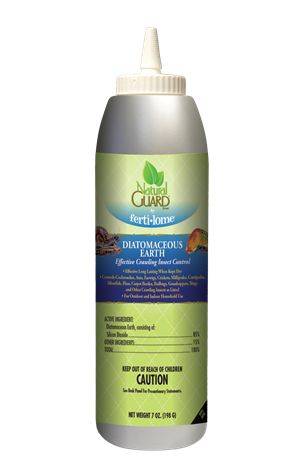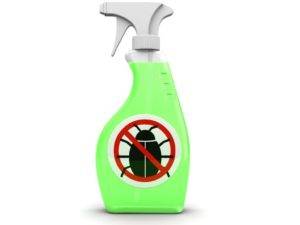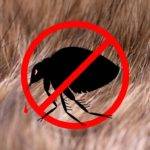As the awareness on safety and the environmental impact of pesticides increases, many would seek after green and natural pest control solutions. Thanks to that, the market is flooded with numerous green and natural remedies and products. Are they really effective and safe?
Green and natural pesticides aren’t necessarily effective or safe. Some may contain potent active ingredients, but the dosage is too low to be effective. Some are natural, but harmful to health and the environment if misused. Make sure you buy from reputable manufacturers, and follow the label instructions when using any pesticides.
This statement may seem to contradict common beliefs, isn’t it? There are already a lot of resources promoting the benefits of green and natural products out there. Hence, the purpose of this article is to correct the misbelief, and set the right expectation on green and natural pesticides.
What are Green and Natural Pesticides?

In a broader sense, green pesticides are environmentally-preferred products. Anyone can claim their products green, if they fulfill certain criteria in reducing environmental impact. Green pesticides can be synthetic or natural. Some people may consider only plant-based pesticides green.
In total, natural pesticides are products containing naturally-occurring active ingredients. They can be organic or inorganic compounds. Examples include plant extracts, mineral extracts, and even microorganisms. Most plant-based natural pesticides are touted as green products.
For the purpose of this article, we are focusing on green products that are natural, be it plant-based or not.
Examples of green and natural pesticides include various essential oils, minerals, enzymes, fungi, and predatory animals.
Should I Use Green and Natural Pesticides?

You should always use a greener pesticide if given an option. They are generally considered to be safer for humans and the environment than synthetic pesticides. Whether or not you should use a natural one is up to your preference.
However, pesticides are designed to kill, be it green or not. Hence, there is always risks associated with using them.
Influenced by marketing pitches, many people assume all green and natural products are safe. That’s not always the case. At best, they are relatively safer compared with synthetic ones. There are also examples of natural pesticides being more toxic than synthetic ones, such as arsenic.
Make sure you do your own research before deciding the pesticides to buy, bearing in mind that green and natural are not equivalent to safe.
Recommended Green and Natural Pesticides
Buying green and natural pesticides from a reputable supplier can help you avoid getting ineffective products. Here’s a list of my recommendations.
Note that I get a small commission when you make eligible purchases through the links in this page. This helps me maintain the site without incurring additional costs to you.
Nature-Cide
Nature-Cide is a range of green products containing natural ingredients such as cedar oil, cottonseed oil, and clove oil. Spraying Nature-Cide onto pests can kill them by contact, while not leaving any harmful residual.
There are different formulations of Nature-Cide. The aerosol canister is suitable and robust for all purpose. Meanwhile, the Flea and Tick version is specialized for blood-sucking fleas and ticks. There is also an outdoor version for backyard pests.
If you need to use huge quantity of Nature-Cide to treat outdoor pests, you can also buy the concentrated version which is more cost-effective.
Diatomaceous Earth

Diatomaceous earth (DE) is a naturally occurring substance made up of the fossilized remains of diatoms, which are tiny organisms that lived in bodies of water. DE is a fine, white powder that is abrasive to insects and other pests. When insects come into contact with DE, the sharp edges of the powder cut through their exoskeletons, causing them to dehydrate and die.
DE is a safe and effective way to control pests in the home and garden. It is non-toxic to humans and pets, and it does not leave any harmful residues. DE is also biodegradable and environmentally friendly.
To use DE for pest control, simply sprinkle it in areas where pests are active. You can apply DE to floors, carpets, furniture, countertops, and other surfaces. You can also apply DE to the soil around plants to control pests such as slugs and snails.
DE is most effective when it is dry. If it gets wet, it will lose its abrasive properties. Therefore, it is important to reapply DE after it rains or if it gets wet.
DE is a long-lasting pest control solution. It can continue to be effective for months or even years as long as it remains dry.
The only issue with diatomaceous earth is, it comes in powder form. You need to apply it carefully to prevent inhalation hazard and contamination. Moreover, it can be a bit messy to apply and clean.
I prefer DE that comes in bottles that are easy to use, such as Natural Guard DE and JT Eaton DE recommended above. Both have a nozzle that allows you to apply the product easily.
PT 565 Plus XLO
If you have issues with flying insects such as mosquitoes or flies, you will need a PT 565 Plus XLO aerosol canister.
PT 565 Plus XLO contains natural pyrethrins, a substrate found in Chrysanthemum flowers. It is known to confer fast knockdown in insects. It also contains synthetic piperonyl butoxide (PBO). PBO itself doesn’t kill insects, but it can enhance the efficacy of pyrethrin.
Unlike Nature-Cide, PT 565 Plus XLO can be sprayed into the air by using the included space spray actuator. The resulting droplets are so fine that they remain in the air for some time. Any insects that fly through the treated space will be knocked down and die eventually.
You can also use it to flush out insects hiding in the dark. Spray underneath and behind furniture, sofa, curtains, and sinks to flush out or kill any pests hiding there. Use the included tip for cracks and crevices if you want to treat cracks and crevices or gaps.
Please don’t spray near any fire source. Aerosol is highly flammable. Avoid using this near your fish tank because pyrethrin is highly toxic to fish, even though it is natural.
Green and Natural Pesticides can be Ineffective and Inefficient
Some poorly formulated green and natural pesticides or remedies can be ineffective and slow-acting. Some are only effective at a high application rate, while many don’t offer long-lasting protection. In some cases, they don’t provide robust results in the field.
Many plant-based ingredients, such as orange oil, oil of lemon eucalyptus, geraniol, melaleuca oil etc., are effective in killing and repelling pests. However, many people often forget the most important point: concentration matters.
Taking the most commonly available oil of lemon eucalyptus (OLE) repellent, for example, an effective repellent should contain at least 10% OLE. In the market, you will be able to find products with a very low percentage of OLE, and some don’t even declare it’s OLE percentage. There are also remedies involving diluting OLE with water, which results in a very diluted solution that doesn’t work.
Formulation is an important factor that defines how good a product is. For example, microencapsulation technology allows the pesticide to last longer, providing meaningful residual protection. Other than efficacy, a good formulation also improves the shelf life and the ease of handling a pesticide. That is one of the reasons why there is a wide price range between different products using the same active ingredients.
Another reason why formulation is so important, especially for plant-based pesticides, is because essential oils are extremely volatile. Without a good formulation, all active ingredients will disappear in the air shortly after being applied.
Another popular green pesticide is enzyme products. Enzymes kill pests in several ways. For instance, chitinase breaks down chitin, an important component of the insect exoskeleton; Protease breaks down protein components in the exoskeleton.
Enzymes work under a specific pH range, and they are often slow acting. To kill a pest, say a cockroach with enzymes, you need to flood the cockroach with enzymes, and wait for a long time before it dies. Effectively you’ll be spraying more than you would otherwise spray using a synthetic product.
Lastly, the issue with robustness of green and natural pesticides is often seen in repellents. Scientists have found repellency effects in various natural substances such as all sorts of essential oils and urine of predators. They work well in the lab. But when tried in the field, only a limited amount of them are working as intended.
Health Impacts to Human

Many people assume that green and natural pesticides must be safe for humans. But that’s not always true!
Not all green and natural pesticides are safe for humans. Some natural compounds used in pest control are harmful if misused, while some are toxic by themselves.
Arsenic, for instance, is a naturally occurring element. In the old times, pest controllers used arsenic trioxide to treat various pests like termites and ants. Overexposure to arsenic can cause poisoning and even death!
“But that’s an inorganic compound. Plant-based products would be much safer.” You may argue.
The fact is, essential oil-based poisoning has been increasing (read more on ScienceAlert). Because essential oils are often marketed as green and natural, many would not associate it with poisoning, and hence increasing the chance of misuse.
On top of poisoning, essential oils are also found to cause contact dermatitis. As with all other products, some people can develop allergic reactions toward essential oils.
Remember, anything can become poisonous at a high dosage, so do natural remedies. Never ignore the potential risks just because a product is natural. Always follow the label instruction when using any pesticides, be it natural or synthetic.
Impact to Non-target Organisms

Green and natural pesticides can be harmful to non-target organisms. For instance, natural pyrethrins are highly toxic to fish, while essential oils can damage plants. Both of them are broad spectrum pesticides, where they can also kill beneficial insects.
Pyrethrin is probably the most well studied and marketed natural pesticide. It is the active ingredient found in certain species of chrysanthemum flower extract that targets the nervous system of insects. The use of pyrethrin in pest control can be traced back to 1000 BC
While pyrethrin is very safe for mammals, it is not safe for fish and aquatic animals. Try spraying pyrethrin at your aquarium, and your fish will start floating.
Certainly, pyrethrin isn’t safe for other beneficial insects, since good and bad insects have the same nervous system structure.
The same issue is also found with essential oils. They kill both beneficial insects and pests.
On top of killing beneficial insects, essential oil pesticides have another problem. Plants exposed to essential oils can develop leaf scorching and browning. They may also experience some level of growth and flowering inhibitions.
Safety Precautions
Required by the regulations, synthetic pesticides come with clear instructions and warning signs, while natural pesticides often lack that. That increased the risk of misuse.
Whenever you buy a green or natural pesticide, make sure it comes with a clear instruction so that you know what’s the right way to use it for your own safety and the environment. You don’t want to buy a pesticide without proper labeling and instructions.
The Bottom Line
The purpose of this article is not to disprove the importance of green and natural pesticides. Instead, it is meant to raise awareness on the limitations, and correct the fallacy on green and natural pesticides.
I personally use both natural and synthetic pesticides at home. On top of efficacy, the other key criterion I always look at is safety. Most of the time, safety can be managed by following strictly the label instructions. Make sure you follow the label instructions even if you are using natural pesticides.
If you are not sure whether you should use synthetic pesticides, check out my article here.


